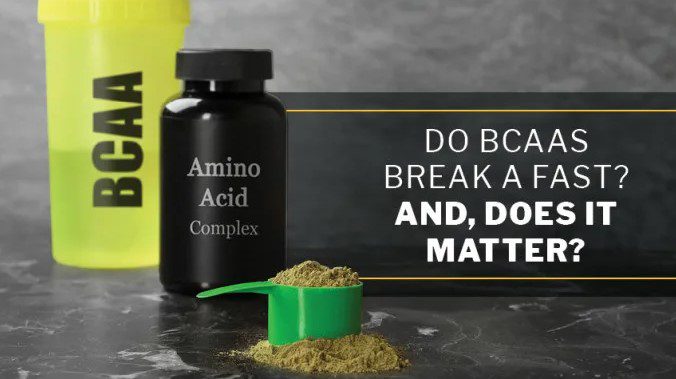Introduction
In the rapidly evolving landscape of sports nutrition, few supplements have garnered as much consistent interest as branched-chain amino acids (BCAAs). Whether you are a professional athlete, a seasoned bodybuilder, or someone seeking to enhance recovery and muscle retention during weight loss, BCAAs remain at the forefront of intra-workout and recovery supplementation.
But what exactly do BCAAs do for your muscles? Are they essential, or merely optional add-ons? And most importantly, how do products such as Kevin Levrone Defender BCAA, Muscled-In Nutrition BCAA, One Science Nutrition BCAA Combo, and Immortal EAABCAA with Caffeine align with your goals? This comprehensive guide delves into the biochemical, physiological, and performance-based significance of BCAAs—and how to integrate them strategically.

1. What Are BCAAs?
Branched-chain amino acids consist of three essential amino acids: leucine, isoleucine, and valine. These are “essential” because the human body cannot synthesize them endogenously; they must be obtained through diet or supplementation.
The “branched-chain” terminology refers to their chemical structure, which includes a branching side chain. This structural difference plays a critical role in how BCAAs are metabolized. Unlike most amino acids, which are broken down in the liver, BCAAs are primarily metabolized in skeletal muscle, allowing for a more direct influence on muscle metabolism, repair, and energy production.
2. How BCAAs Affect Muscle Protein Synthesis
Among the three BCAAs, leucine is particularly important due to its ability to activate the mechanistic target of rapamycin (mTOR) pathway—a central regulator of muscle protein synthesis (MPS). By triggering this pathway, leucine initiates the process of muscle repair and growth, making it a vital nutrient during periods of physical stress or training adaptation.
However, leucine does not act alone. Isoleucine contributes to glucose uptake and muscle energy, while valine supports endurance and tissue repair. The ideal BCAA supplement includes all three in a balanced ratio—commonly 2:1:1 (leucine:isoleucine:valine), though some advanced formulations adjust this based on specific training goals.
3. Benefits of BCAAs for Muscle Health and Performance
a) Reduced Muscle Soreness and Fatigue
Delayed-onset muscle soreness (DOMS) often occurs 12 to 72 hours post-exercise, especially after eccentric lifting or unaccustomed activity. Research indicates that BCAA supplementation may reduce markers of muscle damage, leading to decreased soreness and quicker return to baseline performance.
Additionally, BCAAs can blunt central fatigue by competing with tryptophan for transport across the blood-brain barrier. This helps reduce serotonin production, which is linked to perceived fatigue during prolonged exercise.
b) Improved Muscle Recovery
By promoting faster protein synthesis and reducing muscle protein breakdown (MPB), BCAAs enhance recovery. This is particularly valuable during caloric deficits or high-volume training blocks where muscle preservation is paramount.
c) Preservation of Lean Mass During Weight Loss
Athletes and physique competitors often supplement with BCAAs during cutting phases. With decreased calorie intake and glycogen levels, BCAAs serve as a protective buffer against muscle loss, especially when dietary protein is suboptimal or digestion is compromised.
d) Support During Fasted or Low-Carb Training
When training in a fasted state or on low-carb diets, BCAAs provide a substrate for energy and reduce catabolism. Their ability to be oxidized directly in muscle tissue makes them a reliable intra-workout fuel in glycogen-depleted conditions.
4. Do You Really Need BCAA Supplements?
It depends on your dietary habits and training goals. Individuals consuming ample complete protein (e.g., from whey, meat, fish, eggs) may already meet their BCAA needs. However, if your schedule limits food intake, or you follow a plant-based diet where amino acid profiles are less balanced, BCAA supplementation can help fill critical gaps.
Even for those with adequate protein intake, BCAAs offer benefits around timing, absorption speed, and convenience—especially in situations where full meals are impractical pre- or post-workout.
5. When and How to Use BCAAs
| Goal | Timing | Dosage Range |
|---|---|---|
| Muscle growth | Pre- and post-workout | 5–10g BCAAs with at least 2.5g leucine |
| Fat loss/muscle retention | Fasted training or between meals | 5g before or during session |
| Endurance & fatigue reduction | Intra-workout | 7–10g for extended sessions |
| Recovery enhancement | Post-workout | 5g with carbs or protein |
To be most effective, ensure your supplement delivers an optimal leucine dose (2.5–3g), and is free from unnecessary fillers or excessive sweeteners.
6. BCAA Product Spotlight: Curated Solutions from Anonutrition
Let’s explore four standout BCAA supplements that meet performance and recovery needs across different training goals.
1. Kevin Levrone Defender BCAA (25 Servings)
This high-quality BCAA blend is engineered by the legendary Kevin Levrone and designed for serious lifters and athletes.
Key Features:
-
7g of BCAAs per serving in a 2:1:1 ratio
-
Added electrolytes for hydration
-
Supports lean muscle growth, reduces fatigue
-
Available in great-tasting flavors for intra-workout consumption
Ideal For:
Advanced strength athletes looking for a clean, effective intra-workout BCAA with hydration support.
2. Muscled-In Nutrition BCAA (30 Servings)
A budget-conscious yet high-potency BCAA supplement that doesn’t compromise on formulation.
Key Features:
-
6g BCAAs per serving in performance ratios
-
Helps with recovery and muscle soreness
-
Easy mixability with no residue
-
Suited for beginners and intermediate users
Ideal For:
New gym-goers or athletes on a budget looking to support recovery and maintain muscle mass.
3. One Science Nutrition BCAA + HealthFarm No Mercy Pre-Workout Combo (50 Servings)
This combo delivers robust intra- and pre-workout supplementation in a single package.
Key Features:
-
BCAA with electrolytes + caffeine-free pre-workout
-
50 servings provide extended use
-
Includes glutamine, citrulline, and beta-alanine
-
Pre-workout boosts endurance without stimulants
Ideal For:
Fitness enthusiasts looking for a complete workout stack with both BCAA and pump-enhancing support.
4. Immortal EAABCAA with Caffeine (30 Servings)
A dual-function energy and recovery formula combining BCAAs and EAAs with a caffeine kick.
Key Features:
-
Full-spectrum essential amino acids
-
Includes 100mg caffeine for focus and energy
-
Supports muscle repair and mental alertness
-
Ideal for early-morning or afternoon workouts
Ideal For:
Busy professionals and athletes who need a mental and physical lift before or during training.
7. BCAAs vs EAAs—What’s the Difference and Do You Need Both?
Essential Amino Acids (EAAs) include all nine amino acids your body cannot produce. BCAAs are part of this group but focus only on three. While BCAAs effectively stimulate MPS, full EAA formulas like Immortal EAABCAA offer complete building blocks for muscle repair.
Best strategy:
-
Use BCAAs alone for quick intra-workout fueling
-
Use EAAs when meals are delayed, or for complete recovery post-training
8. Stacking BCAAs with Other Supplements
BCAAs can be safely combined with:
-
Creatine: For muscle strength and power
-
Glutamine: To support immune function and recovery
-
Citrulline Malate: For endurance and blood flow
-
Beta-Alanine: To buffer lactic acid buildup during training
Avoid taking BCAAs too close to large meals or protein shakes to avoid redundancy. Their best use case is between meals or intra-workout, when amino acid availability is low.
9. Myths and Misconceptions About BCAAs
“BCAAs are useless if you eat enough protein.”
Not always. While total protein intake matters, timing and context still give BCAAs a functional role—especially during long fasts, caloric deficits, or high-intensity training blocks.
“BCAAs build muscle by themselves.”
False. They stimulate muscle protein synthesis but cannot complete it without all essential amino acids. Think of them as a spark—not the full fire.
“All BCAA supplements are the same.”
Not true. Quality varies based on source, purity, flavoring agents, added ingredients (like electrolytes or caffeine), and third-party testing.
10. Safety, Dosing, and Long-Term Use
BCAAs are considered safe when consumed within recommended guidelines:
-
General range: 5–15g per day
-
Upper threshold: Up to 20g/day in split doses during extreme training
-
Long-term use shows no significant adverse effects in healthy individuals
Those with medical conditions such as maple syrup urine disease (MSUD) or kidney issues should consult a physician before use.

Conclusion: Do BCAAs Belong in Your Routine?
If you’re training hard, managing a busy schedule, or navigating fat loss phases, BCAAs offer a targeted edge in recovery, muscle retention, and fatigue management.
Whether you prefer a classic blend like Kevin Levrone Defender BCAA, a budget-friendly performer like Muscled-In Nutrition BCAA, or an all-in-one combo like the One Science Nutrition BCAA with HealthFarm No Mercy, the key is consistency and context.
And if you’re seeking stimulation plus recovery, Immortal EAABCAA with Caffeine covers both bases in one scoop.
Choose your product wisely, time it according to your training, and integrate it into a well-rounded nutrition and training plan. Supplements like these won’t replace hard work—but they can certainly help you get more out of it.

